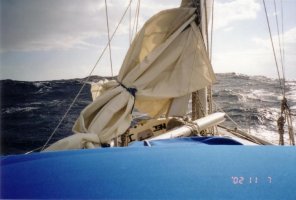Re: Rudder re-design
An excellent top priority! The 37 was designed by my dad
for the 1 ton cup and we owned hull #1 for a while and
campaigned her heavily. She would not be my first choice
for a round the world cruise but that's just my opinion. The
37, 39, and 46 all have similar underbodies and rather
smallish rudders. After discussing this issue with my
dad, I lengthened the rudder on my old 39 about 8 inches
while maintaining the same profile. This was easily accomplished
because the Foss company still has the OEM rudder mold. I
don't know if the 37 mold still exists but you might check with
them. If you are really serious about this mod, email me
off list and I would be happy to go over the details with you.
Martin
Originally posted by cajmills
I plan on going offshore and consider the rudder modification as a priority.
An excellent top priority! The 37 was designed by my dad
for the 1 ton cup and we owned hull #1 for a while and
campaigned her heavily. She would not be my first choice
for a round the world cruise but that's just my opinion. The
37, 39, and 46 all have similar underbodies and rather
smallish rudders. After discussing this issue with my
dad, I lengthened the rudder on my old 39 about 8 inches
while maintaining the same profile. This was easily accomplished
because the Foss company still has the OEM rudder mold. I
don't know if the 37 mold still exists but you might check with
them. If you are really serious about this mod, email me
off list and I would be happy to go over the details with you.
Martin


